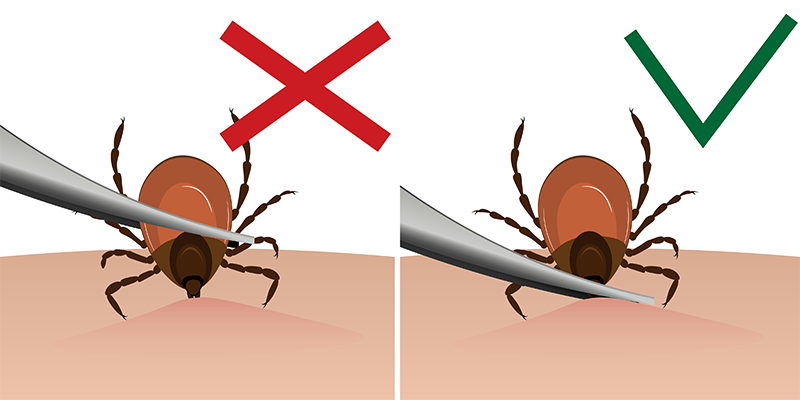

Tips to Avoid Tick Bites This Fall
As we turn the corner from the “peak season” for ticks, now is not the time to stop taking precautionary measures to avoid being bit. There are two important facts to consider even though you may think you are out of Lyme season and no longer need to worry about potentially contracting Lyme disease.
We are providing 5 tips to help you and your loved ones stay alert during fall activities this year and not let ticks get in the way. There is no 100% way to avoid getting bit by a tick, but implementing these strategies may help lower your chances of contracting Lyme disease.
Avoid a tick’s favorite habits. This tip may seem simple enough but there are going to be times when you are engaging in outdoor activities and some places are hotspots for ticks. Ticks are found in the areas they can feed off animals which typically include:
The less exposed skin, the better. If you do find yourself participating in outdoor activities, especially in wooded or grassy areas, it is important to cover up. It becomes more difficult to avoid ticks when you are in their environment, therefore, the need for self-protection by covering up with your clothes is essential.
Insect repellant CAN help. Insect repellant can aid in self-protection when sprayed onto your skin and clothes. The chemicals that repel mosquitos have shown to be somewhat protective against ticks. If you are looking for a better option, repellants with DEET concentration levels of 30% to 40% will be more effective in keeping ticks away.
The strongest option for the spray method would be products that contain permethrin, this not only repels but kills ticks. If you choose to use a spray that contains this chemical, it should only be used on your clothes, NOT your skin (1).
Everyone check for Ticks and take a shower! After returning home, everyone should be checked for ticks, they can be small, and it will require a thorough inspection to be safe. If you have children make sure to check them as well. The chances of contracting Lyme disease decrease when ticks are found quickly after attachment and decrease even more if they are still crawling around.
When you are completing your search, spend extra time inspecting your legs and groin area. Ticks often crawl up the ankle in search for their next meal. Once this is completed, a shower is recommended to wash away any unattached ticks. It is important to feel around soapy areas for any new bumps on the skin.
Lastly, when we say check everyone, we mean it. Your animals can also contract Lyme disease and their coats sometimes act as a “tick magnet” (2).
If you find a tick, remove it the right way. Even if you take all the self-protection measures listed above, there is still a chance that you will find an attached tick. Do not panic, just know the steps to remove it quickly and properly. Here is a step-by-step process provided by the Center for Disease Control (CDC):
How to remove a tick:
If you or someone you know is experiencing Lyme disease symptoms, order the DNA ConneXions Lyme disease panel! Our Lyme Disease Test Panel tests for four different genes that are found in Borrelia burgdorferi, the most common cause of Lyme disease in the United States, and ten common Lyme disease vector born co-infectors and other organisms. Positive detection of Lyme co-infectors indicates likely infection with the Lyme spirochete as well.
A positive PCR result from the DNA ConneXions® Lyme Disease Test Panel indicates the presence of DNA from B. burgdorferi and/or other co-infectors. A negative result does not prove a patient is not infected with a tick-borne infection, rather it indicates the absence of detectable Lyme and/or other tick-borne co-infections. A patients’ ability to fight the disease, stage of infection, and timing of courses of antibiotics are only some of the factors that may affect the detectability of the spirochetes DNA.
PURCHASE YOUR LYME PANEL TEST KET HERE!
References:
References:
DNACONNEXIONS.COM © ALL RIGHTS RESERVED 2024 | Issues with website? Contact Websnare, Inc.